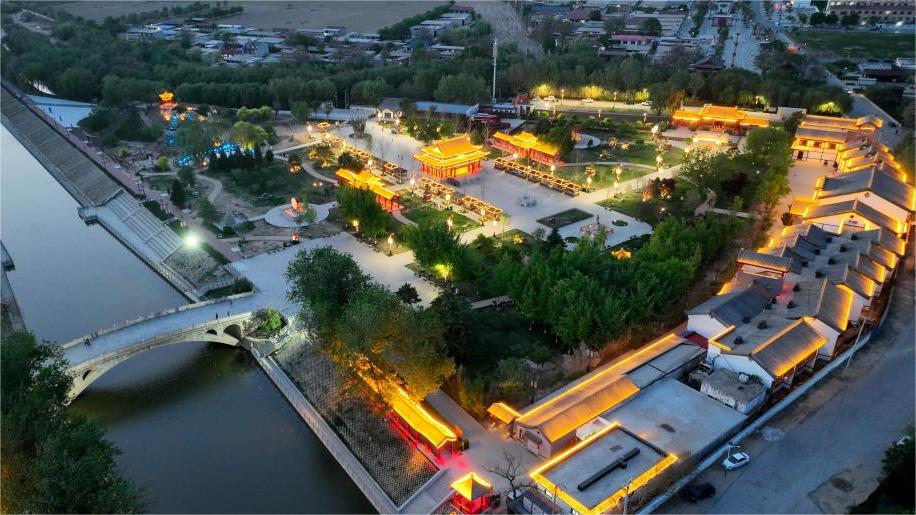Balanced medical resources bring healthcare to doorsteps in China
BEIJING, May 10 (Xinhua) -- A 72-year-old resident surnamed Xu from Bijie City in southwest China's Guizhou Province, who had long planned to treat her lower back pain with surgery at a "big hospital," was overjoyed to find herself undergoing the operation at a local hospital in September and leaving for home in merely five days.
All thanks to a 20-strong medical team who traveled 1,800 km from eastern Zhejiang Province to assist the local hospital in developing diagnosis and treatment centers and major clinical disciplines.
China has long grappled with an imbalance and inadequacy in the availability of quality medical resources compared to its vast population of 1.4 billion, with patients frequently seeking care at hospitals in regional capital cities or major urban centers like Beijing and Shanghai, where quality resources are typically concentrated. However, the country has now committed to addressing this issue.
As part of measures to promote tiered diagnosis and treatment, China has established national centers of medicine spanning 13 categories and over 230 regional medical centers at public hospitals, said Zhu Hongbiao, an official of the National Health Commission (NHC).
Among the regional medical centers, 125 operate at the national level, and they have alone transferred more than 1,400 diagnosis and treatment technologies to under-resourced regions since their inception, according to NHC data.
A notable drop has been observed in the demand for seeking medical services by traveling across regions, said Zhu, citing data indicating that 52 percent of diagnoses and treatments were conducted at the country's grassroots institutions in 2023.
Public hospitals are the cornerstone of China's medical and health services system. Data indicates that over 80 percent of the diagnoses and treatments recorded by medical and health institutions nationwide were carried out at the country's 11,000 public hospitals.
China is also piloting a type of urban medical consortium based on public hospitals in 81 cities and developing similar medical groups in all counties. The goal, according to Zhu, is to provide the public with "integrated, continuous" medical and health services from disease prevention and treatment to rehabilitation and health improvement.
Thanks to these efforts, residents in Zhoukou, a city with a population of 12.59 million in central China's Henan Province, witnessed the addition of nine tertiary hospitals, the top tier of China's hospital grades, over the past two years, bringing the total number of such hospitals to 17, according to Ji Jianjun, mayor of the city.
Seven out of its 10 publicly-funded general hospitals operating at the county level have elevated their service capabilities to match those of tertiary hospitals, Ji said.
The city now boasts three provincial-level regional medical centers, specializing in cardiovascular, neurological and respiratory diseases, respectively.
Consequently, over 40 major surgeries in these fields, which previously had to be conducted at provincial hospitals, can now be performed in the city, sparing local patients the inconvenience of seeking treatment in other cities.
TALENT MATTERS
Professionals are undoubtedly crucial for channeling medical resources to the grassroots levels.
Over the past five years, authorities in east China's Jiangsu Province have recruited 38,900 professionals for medical and health institutions in the communities solely through provincial platforms.
The proportion of health professionals working at the community level has risen to 36 percent in the province, and 48.6 percent of health technicians at township clinics hold at least a bachelor's degree, said Tan Ying, a health official in the province.
By the end of 2022, more than 4.55 million health personnel were working at nearly 980,000 primary medical and health institutions nationwide. According to the sixth national health service survey, 90 percent of Chinese families can reach their nearest medical facility within 15 minutes.
Fiscal support is imperative, as seen in Jiangsu Province, where investments in public hospitals by governments at all levels have grown at an average annual rate of 17.1 percent since 2021, according to Tan.
In particular, the provincial government invested 10 billion yuan (about 1.4 billion U.S. dollars) over the past three years.
Of this, 4.85 billion yuan was spent on the development of high-quality hospitals and the establishment of regional medical centers through paired-up assistance, and 2.5 billion yuan was allocated to ensure the operation of public hospitals, Tan said.
Jiangsu is expected to invest an additional 16.5 billion yuan to improve medical service infrastructure in provincial-level institutions between 2021 and 2025.
Photos
Related Stories
- China improves regulation of long-term care insurance schemes
- China to re-inspect medical facilities in 2024 insurance fund checks
- Niche tourism sector gains healthy advantage in Shanghai
- China to improve management of midwife service
- SCO can play significant role in addressing healthcare challenges: Pakistani official
Copyright © 2024 People's Daily Online. All Rights Reserved.









